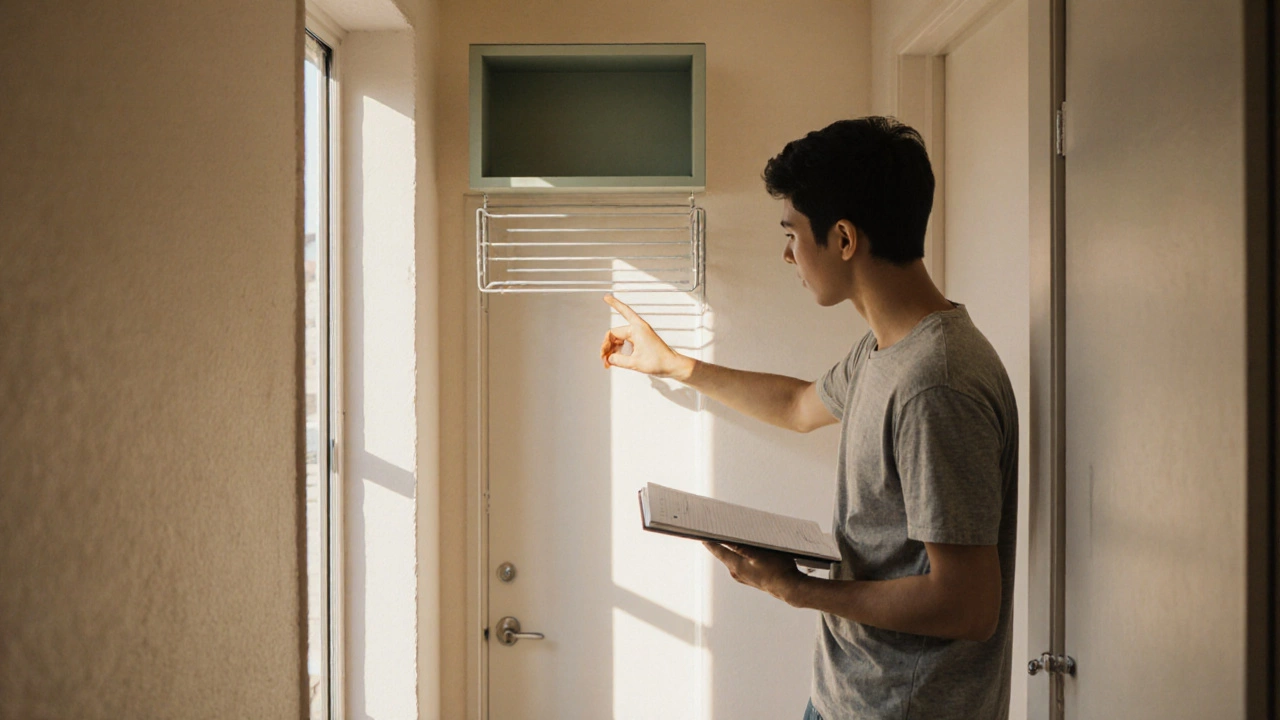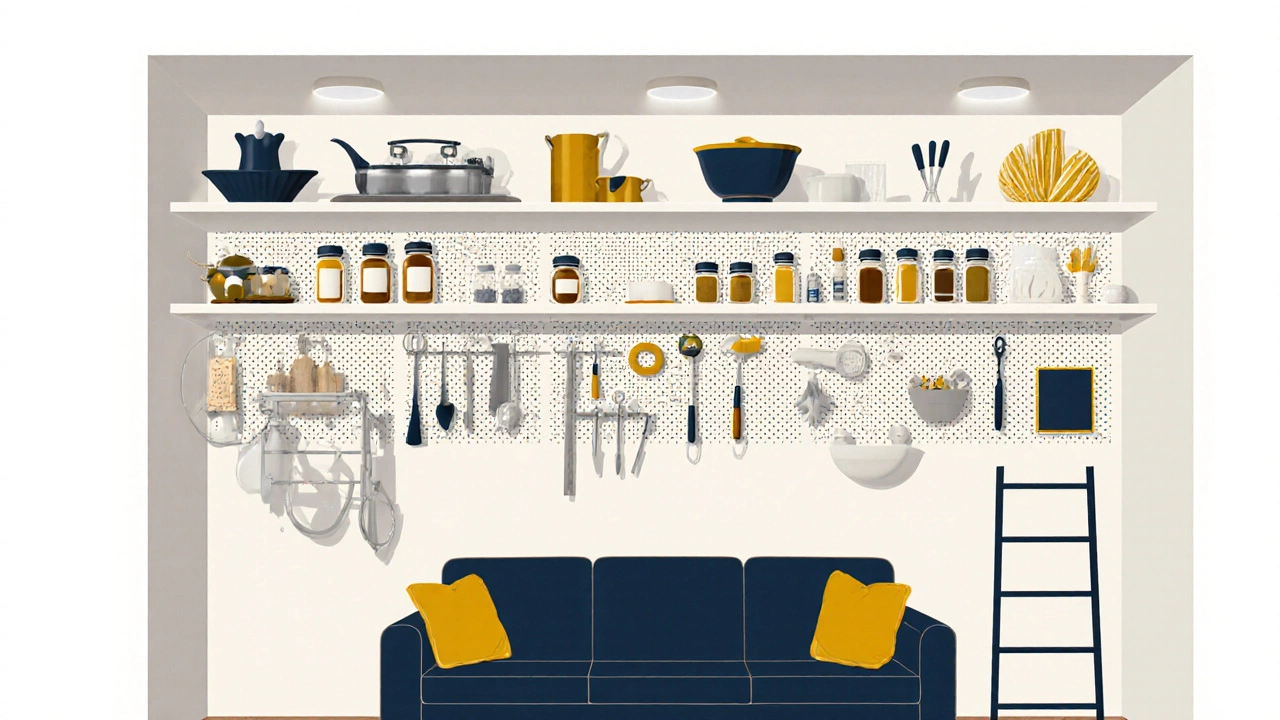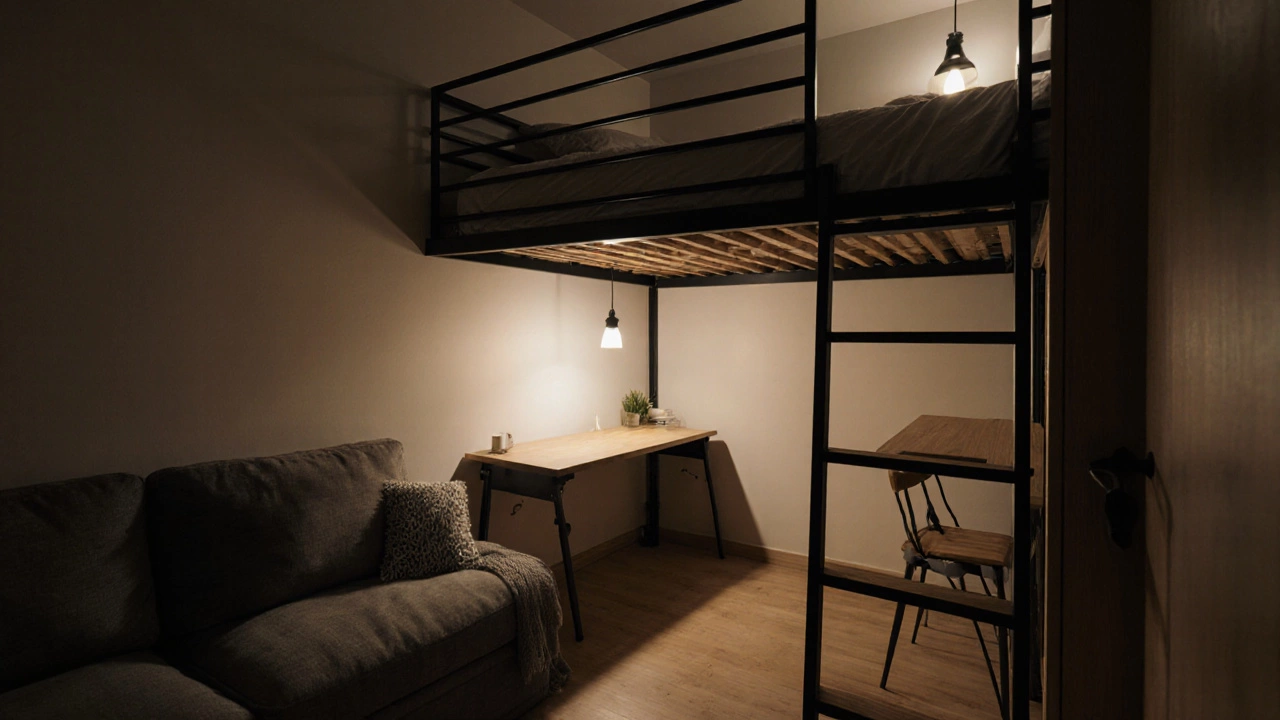Maximize Storage in a Small House: Practical Space‑Saving Ideas

Storage Solution Finder
Find Your Perfect Storage Solution
Answer a few questions to get personalized recommendations for your small home storage needs.
Recommended Storage Solution
Why this works: Based on your budget, space constraints, and flexibility needs.
Ever feel like you’re tripping over shoes before you even reach the kitchen? That cramped feeling isn’t just annoying - it steals time and peace of mind. The good news? You can turn every inch of a small home into a functional storage zone without tearing down walls or splurging on pricey remodels.
Small space storage is the practice of using clever design and organization to get the most out of limited square footage in a home. Below, we walk through the exact steps, tools, and tricks that let you truly small house storage to work for you.
Key Takeaways
- Start with a room‑by‑room audit to spot hidden dead space.
- Go vertical: built‑in shelving, wall‑mounted racks and pegboards free floor area.
- Hide storage inside furniture, floors and ceilings for a seamless look.
- Choose multi‑functional pieces that double as seating, tables or beds.
- Maintain the system with a simple weekly reset routine.
1. Audit Your Space - Know What You Have
Before buying anything, walk through each room with a notebook. Note three things for every nook:
- What items currently live there?
- How often are they used?
- Is there unused vertical or hidden volume?
This audit reveals low‑traffic corners that are perfect for tucked‑away storage. For example, the space above a door frame is often ignored but can hold a slim Wall‑mounted rack for coats or bags.
2. Go Vertical - Built‑In Shelving and More
When floor space is scarce, the ceiling becomes your best ally.
Built‑in shelving replaces bulky free‑standing units and eliminates gaps between wall and floor. Install a floor‑to‑ceiling unit in the living room and use the top shelf for rarely‑used decor, keeping daily items within arm's reach.
Wall‑mounted solutions are cheaper and easier to install. A series of Pegboards in the kitchen or workshop can hold pots, tools, or spices, turning a blank wall into a tidy display.
Here’s a quick cost‑vs‑benefit snapshot:
| Option | Installation Cost (USD) | Space Saved | Flexibility |
|---|---|---|---|
| Built‑in Shelving | $800-$1500 | High (uses full wall height) | Low (fixed once installed) |
| Wall‑Mounted Rack | $150-$400 | Medium (adds vertical storage only) | Medium (can be repositioned) |
| Freestanding Shelves | $100-$300 | Low (occupies floor area) | High (move anytime) |

3. Hide Storage Where No One Looks
Hidden storage feels like a secret weapon - it keeps the aesthetic clean while still offering plenty of room.
Under‑floor storage works great in basements or homes with raised flooring. Install shallow drawers beneath the floorboards and stash seasonal clothing, archived documents, or extra linens.
In the kitchen, a Pull‑out pantry replaces a deep cabinet door. Slide a narrow shelf out, and you can see every jar without digging.
Furniture with hidden compartments - think ottomans that open, coffee tables with lift‑top sections, or a bed frame that lifts to reveal drawers - adds storage without adding a new piece of furniture.
Even the ceiling isn’t off limits. Install Garage ceiling storage racks for sports gear or luggage. A simple pulley system lets you lift boxes up and out of the way.
4. Choose Multi‑Functional Furniture
When a piece does double duty, you instantly reclaim the space it would otherwise occupy.
A sofa with built‑in storage cushions can hold blankets, board games, or pet supplies. A Loft conversion in a studio apartment creates a sleeping zone above, freeing the floor for a desk or seating area.
Consider a fold‑down dining table that tucks into a wall when not in use. Paired with stacking chairs that nest underneath, you keep meals elegant without a permanent table.
When shopping, ask: Does this item have a hidden drawer? Can it be folded flat? Does it serve more than one purpose?
5. DIY Custom Solutions - Tailor to Your Layout
Professional cabinets are great, but a DIY approach lets you adapt to oddly‑shaped corners.
Step‑by‑step for a custom corner shelf:
- Measure the exact width, depth, and height of the corner.
- Cut three plywood pieces to form a triangular back, base, and side.
- Attach using pocket-hole screws and a wood glue.
- Paint or stain to match existing décor.
- Mount brackets to the wall for extra support.
Because the shelf follows the wall’s angles, you gain storage that a standard rectangular unit would waste.
Another favorite: a rolling kitchen island on casters. Add a lockable wheel, and you have a portable prep station that can disappear into a closet when guests arrive.

6. Organizational Habits - Keep the System Working
Even the smartest storage plan collapses without daily upkeep.
Adopt the "one‑in, one‑out" rule: for every new item you bring home, donate or discard an old one. Store similar items together - pans with pans, shoes with shoes - to avoid random piles.
Use clear Storage bins with labels. Transparent boxes let you see contents at a glance, and labels prevent misplacement.
Set a 15‑minute weekly reset: walk through each room, return misplaced items to their designated spot, and note any overflow that needs a new solution.
7. Quick Checklist Before You Buy
- Measure the exact dimensions of the area you want to fill.
- Identify if vertical, hidden, or multi‑functional storage fits best.
- Set a budget - DIY often saves 30‑50%.
- Check load‑bearing capacity of walls before installing heavy shelves.
- Pick materials that match existing décor (wood, metal, glass).
Frequently Asked Questions
Can I add storage without drilling into walls?
Yes. Tension‑rod curtains, free‑standing ladder shelves, and adhesive‑backed pegboard strips give you vertical space without any permanent holes.
What’s the best material for hidden floor drawers?
Plywood with a thickness of 12‑18 mm offers strength while staying lightweight. Finish with a low‑VOC sealant to protect against moisture.
How much weight can a wall‑mounted rack safely hold?
If you anchor into studs, most metal racks handle 40-60 kg per shelf. For drywall‑only fixes, stay under 10 kg and use toggle bolts.
Is a loft bed worth the investment in a studio?
When ceiling height is at least 2.4 m, a loft adds 1.2 m of usable floor space underneath - perfect for a desk or sitting area. It pays off quickly in a tight layout.
How do I keep the look tidy with many storage pieces?
Choose a unified colour palette (e.g., matte black metal or natural wood) and limit decorative items to a few well‑chosen pieces. Uniform handles and brackets also create visual harmony.
By combining smart design, a handful of versatile pieces, and disciplined habits, even the coziest house can feel spacious and organized. Start with a single room, apply the ideas above, and watch the transformation unfold.